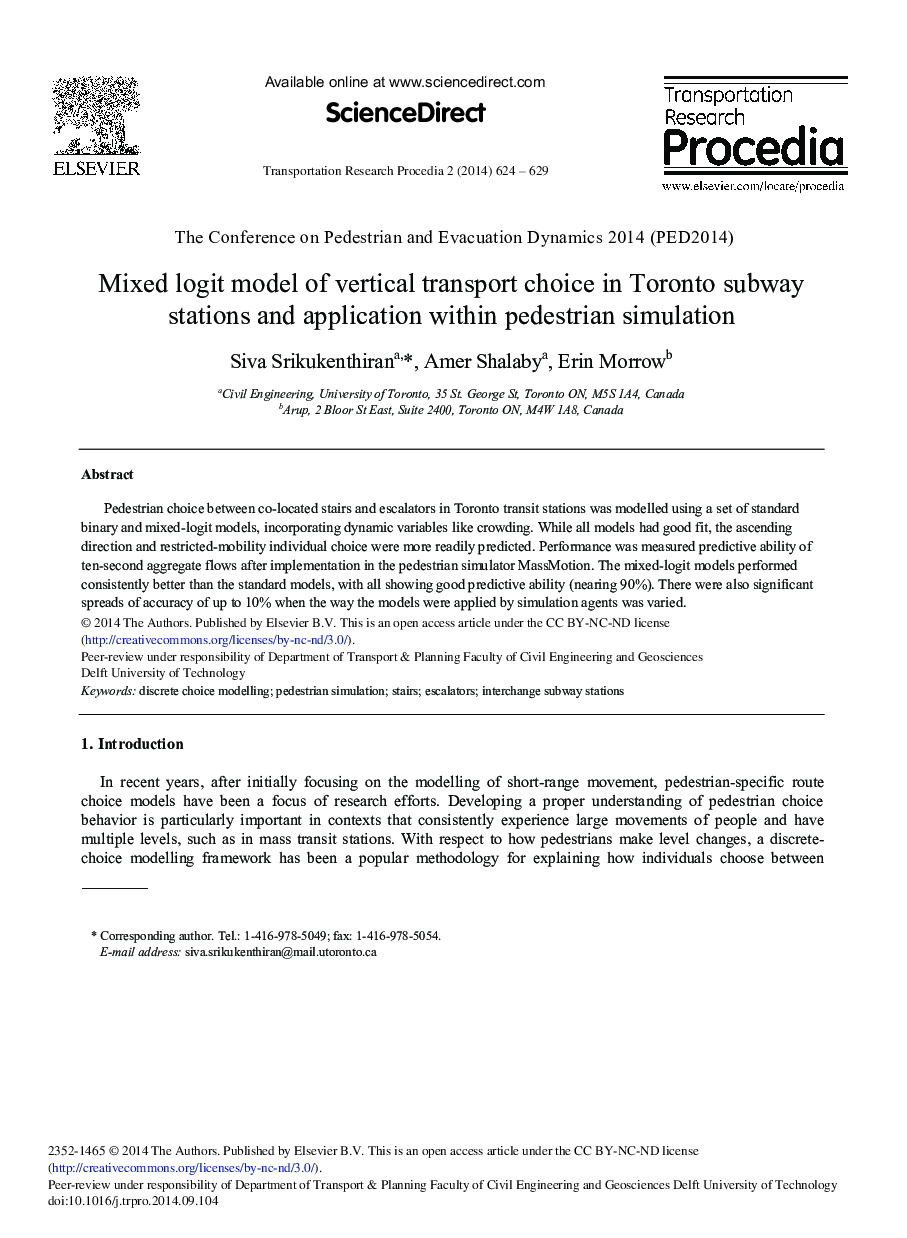| Article ID | Journal | Published Year | Pages | File Type |
|---|---|---|---|---|
| 1106739 | Transportation Research Procedia | 2014 | 6 Pages |
Abstract
Pedestrian choice between co-located stairs and escalators in Toronto transit stations was modelled using a set of standard binary and mixed-logit models, incorporating dynamic variables like crowding. While all models had good fit, the ascending direction and restricted-mobility individual choice were more readily predicted. Performance was measured predictive ability of ten-second aggregate flows after implementation in the pedestrian simulator MassMotion. The mixed-logit models performed consistently better than the standard models, with all showing good predictive ability (nearing 90%). There were also significant spreads of accuracy of up to 10% when the way the models were applied by simulation agents was varied.
Related Topics
Social Sciences and Humanities
Social Sciences
Safety Research
